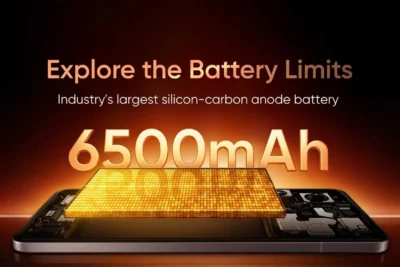Does your phone yet have a Silicon-Carbon Battery?

The biggest change lies in the anode—the part of the battery that stores and releases electrons during charging. Traditional lithium-ion batteries use graphite here, but silicon-carbon batteries replace it with a silicon-infused anode. Why? Because silicon can store up to 10 times more energy than graphite. The result is a battery with higher energy density, meaning more power packed into the same space.
But silicon isn’t perfect. It expands and contracts as the battery charges and discharges, which can cause wear and tear over time. By combining it with carbon, manufacturers have stabilized the material, making it both durable and energy-dense. In short, these batteries last longer, charge faster, and take up less space.
These batteries can recharge fully in minutes, not hours. For users, that means a quick 15- or 20-minute top-up gives you enough juice to power through your day.
Phones like the Realme GT7 Pro, iQOO 13, OnePlus 13, OPPO Find X8 series, Vivo X200 series, and Xiaomi 15 series already have these batteries inside them.
Yes, Samsung and Apple are lagging here…
See https://www.howtogeek.com/smartphone-batteries-just-leveled-upand-you-didnt-even-notice
#Blog, #batteries, #technology
